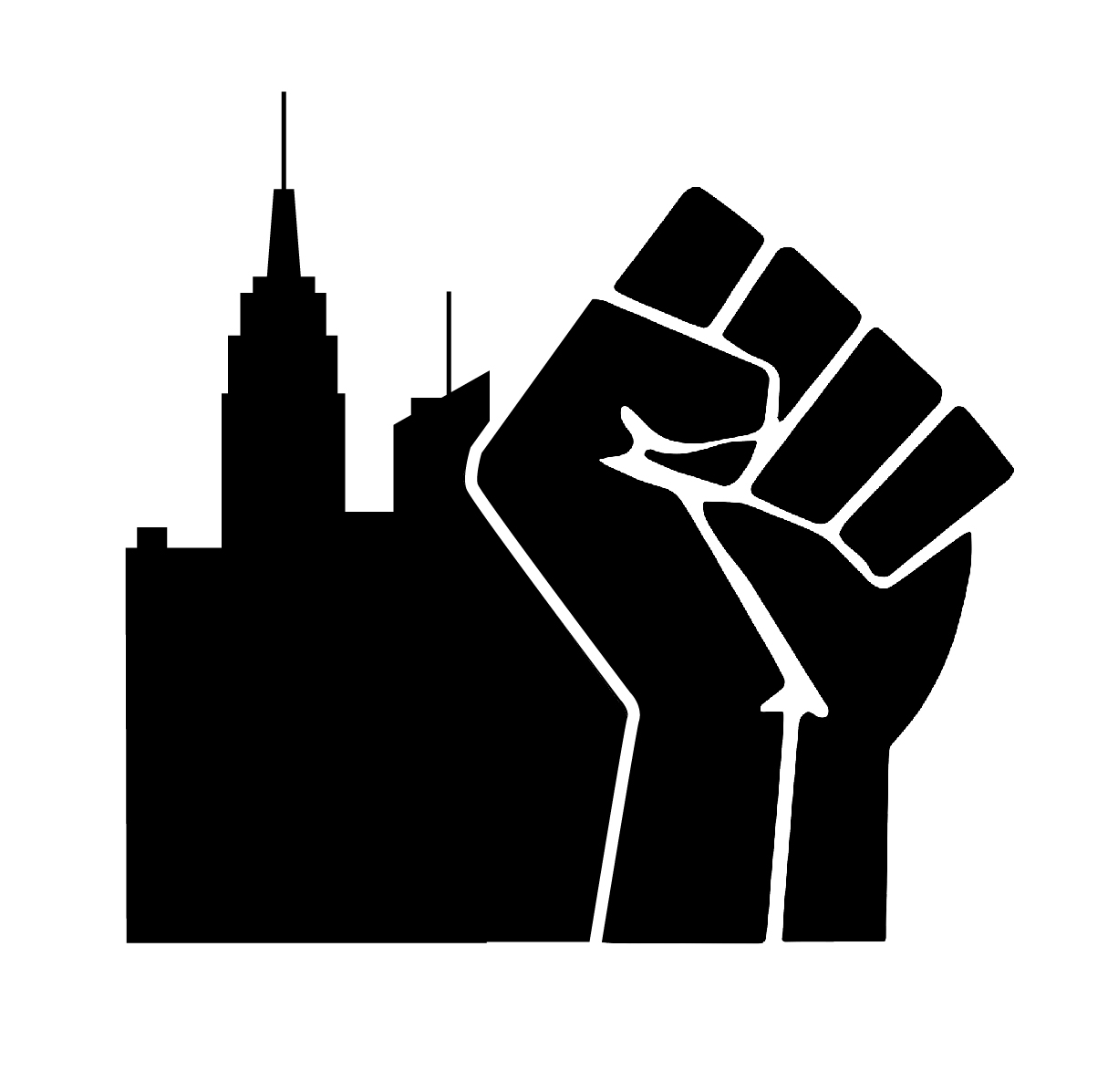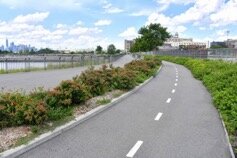Why the “Just Green Enough” Approach is not an Effective Model for Combating Green Gentrification
The new shoreline biking path at Bush Terminal Park in Sunset Park
Over the past two decades, the Sunset Park, Brooklyn community has advocated for the New York City government to clean up its waterfront. This community activism has led to new green amenities. Now, Sunset Park has a new shoreline walking path and newly planted trees alongside roads. Additionally, the community was able to prevent a toxic gas-fired power plant from being built in its backyard. These improvements, however, led to increased housing and living costs, which forced some low-income community members to relocate outside of Sunset Park. The Sunset Park community was unknowingly forced to choose between affordable housing and being able to breathe. The community chose to breathe. Now, some community members are being forced to leave.
The story of Sunset Park is becoming a rather common story throughout New York City. Historically, lower-income communities have had less access to quality greenspaces—such as parks and gardens—and live in worse environmental conditions than higher-income communities. To counter this historical trend, New York City has made it a priority to increase access to greenspaces in lower-income areas. The City’s policy decision is supported by science because there is overwhelming amounts of data demonstrating that greenspaces—urban areas that have high quality and/or quantity of natural vegetation, such as trees, bushes, flowers, and open grassy fields—have a direct positive effect on individual and community health and well-being. For example, research shows a person’s happiness and well-being, general health, and attention increase the more she is exposed to a natural setting. Conversely, rates of depression, mortality, stress, and aggression reduces the more a person is exposed to a natural setting.
However, increasing and/or revitalizing greenspaces in low-income areas, when left unchecked, can lead to a process called “green gentrification,” which is occurring in Sunset Park. To counter green gentrification, some communities and scholars advocate for the “just green enough” approach. The just green enough approach has many redeeming qualities; but this approach is not the appropriate model to combat green gentrification in New York City.
The Average price of a condo in Sunset Park
Green gentrification, also referred to as environmental gentrification, describes the process of property values and the cost of living increasing in a community as the community becomes greener and more attractive to outside investors. These rising costs increase the financial burden on low-income community members and can force them to have to relocate, which leads to displacement of the local community. This scenario, where the introduction and/or revitalization of a greenspace leads to “the displacement and/or exclusion of the very residents the green[space] was meant to benefit,” is called the green space paradox.
The just green enough approach has gained traction as a tool to combat green gentrification and the green space paradox. The just green enough approach focuses on greening a community by leveraging community involvement and redefining the meaning of “green” in urban spaces. The goal of this approach is to “green” a community, but do so in a way that protects low-income community members from displacement. Advocates of the just green enough approach hold up Greenpoint, Brooklyn as an example of how the approach works. Historically, Greenpoint, and in particular Newtown Creek, has been a dumping ground for toxic waste. However, in the last few years, the community banded together and advocated for environmental cleanup and the introduction of more greenspaces. After nine years, the community of Greenpoint finally got a “greenspace” in the form of the Newtown Creek Nature Walk. This “nature walk” has limited-to-no natural vegetation. But, advocates of the just green enough approach hold it up as an example of how a community can become “greener” and still protect the existing community.
A section of the Newtown Creek Nature Walk in Greenpoint
Even though the “nature walk” is a victory for Greenpoint because any successful park project is a victory for a community that has suffered a long history of severe environmental degradation, the just green enough approach is not the solution to combat green gentrification throughout New York City. Redefining what “green” means and building “greenspaces” that consist of mostly concrete with little-to-no vegetation is not the solution. These new types of “greenspaces” will not give the local community the multitude of benefits associated with traditional greenspaces because such benefits are directly linked to a person experiencing a natural setting, which must consist of vegetation. Additionally, the just green enough approach is not solving the problem presented by green gentrification. Green gentrification forces a community to either choose affordable housing or a healthy living environment. Instead of challenging the concept that a community must choose between these two options, the just green enough approach accepts these are the only two options, and chooses affordable housing at the cost of healthy living every single time. Thus, a solution that perpetuates the unfair and unjust either-or choice presented by green gentrification is not a solution, but actually part of the problem.
Therefore, to improve the quality of life for all citizens of New York City, the New York City government needs to have greater involvement in the creation of greenspaces through a two-prong approach. First, the City must collaborate with local community members to understand a community’s desires and fears. Then, the City must construct traditional greenspaces that factor in community input. Second, the City must enact protective housing measures that will stabilize the affordable housing market from rising costs associated with the rehabilitation and/or creation of greenspaces. During this second stage, the government must not apply a one size fits all approach. Instead, it must create protective housing measures that are tailored to each neighborhood’s unique needs. Thus, by applying this two-prong approach, New York City will have a flexible tool to improve the standard of living in local communities throughout the five boroughs, without displacing the community members the initiatives are designed to benefit.
New York City communities, like Sunset Park, should not be forced to choose between engaging in greenspace initiatives or continuing to live in environmentally, psychologically, and physically depriving environments. Instead, upon petition from a local community for a greenspace initiative, New York City should be heavily involved in the preparation and creation of that greenspace to combat green gentrification and guarantee low-income residents both healthy and affordable living situations.



